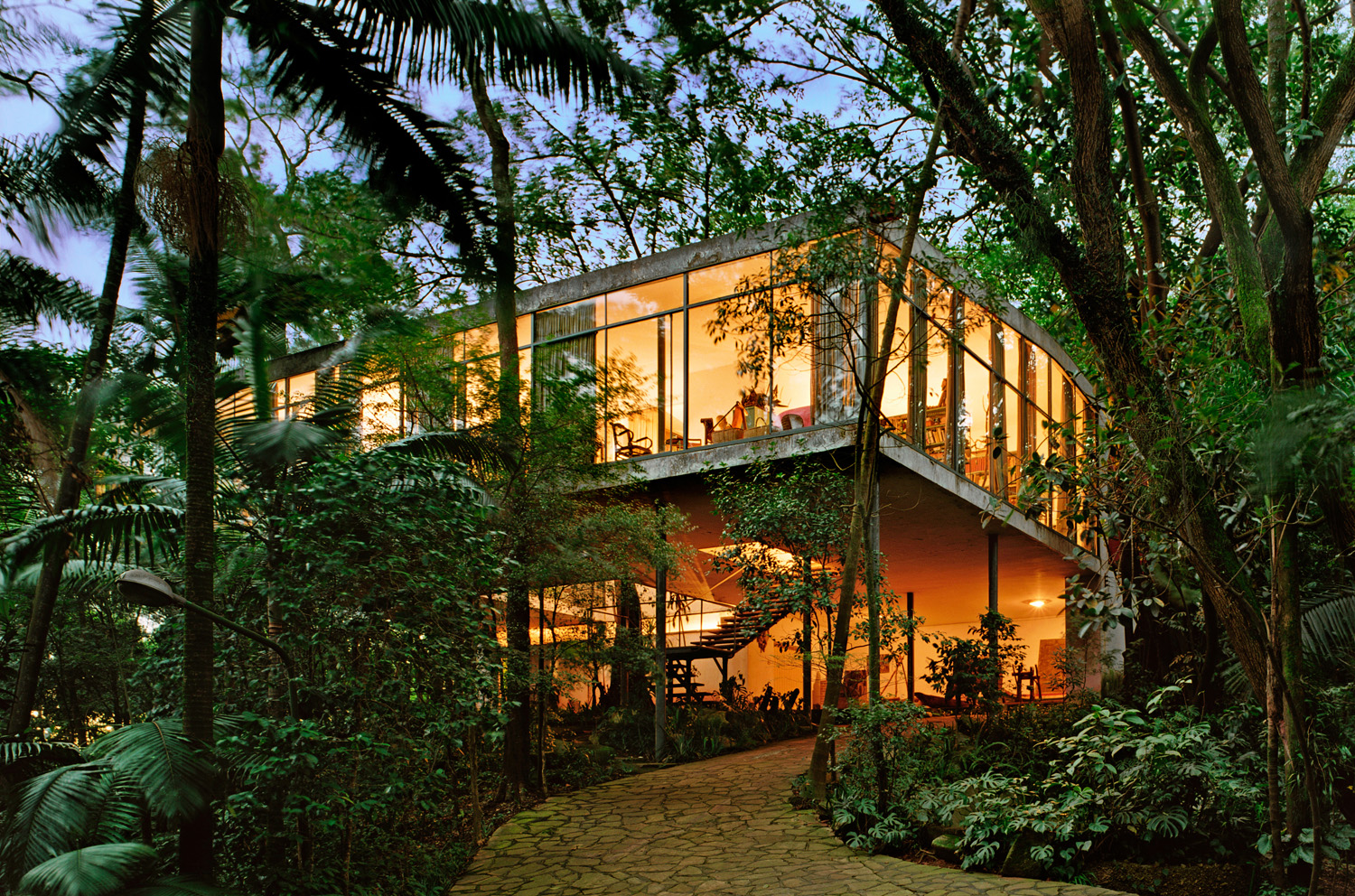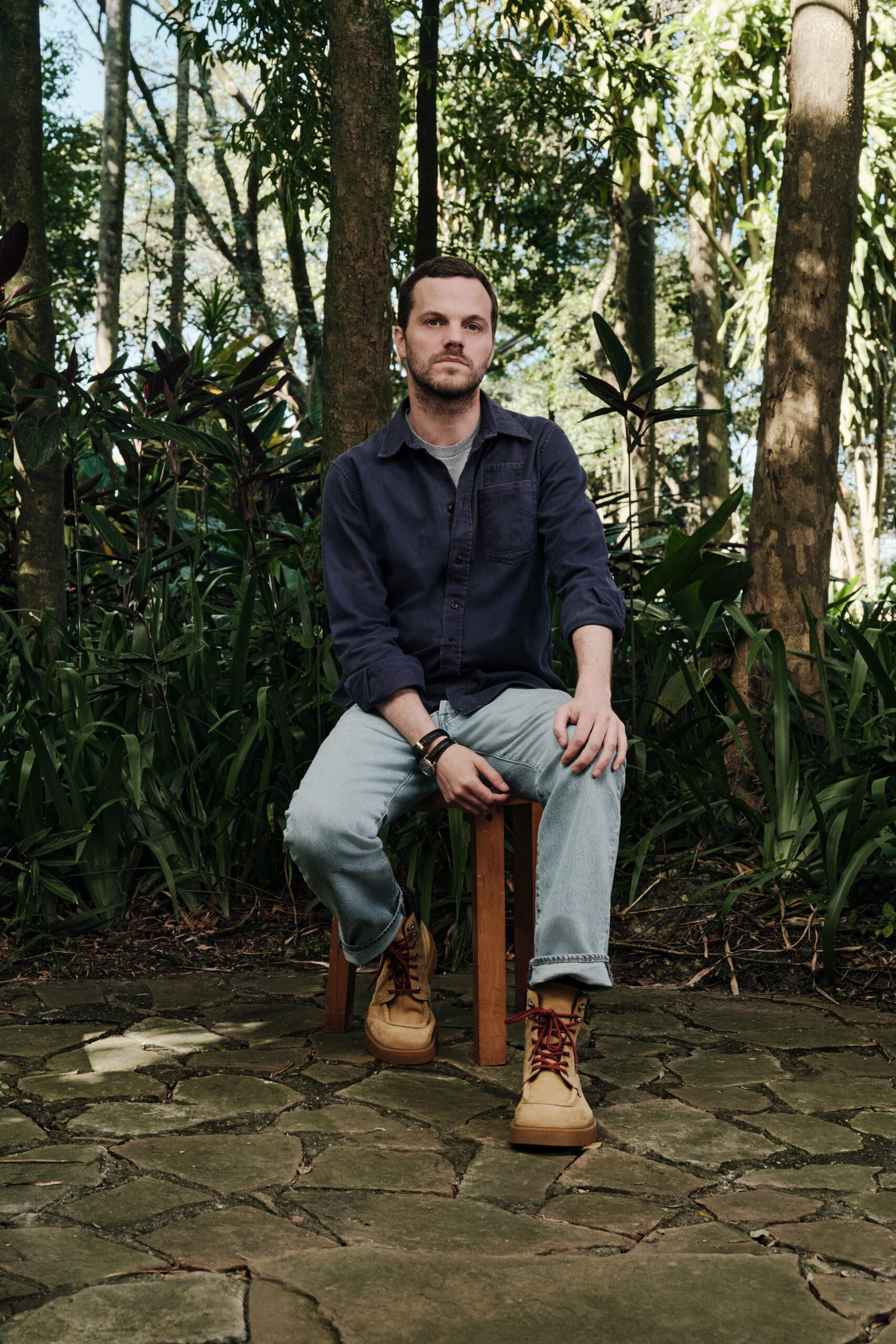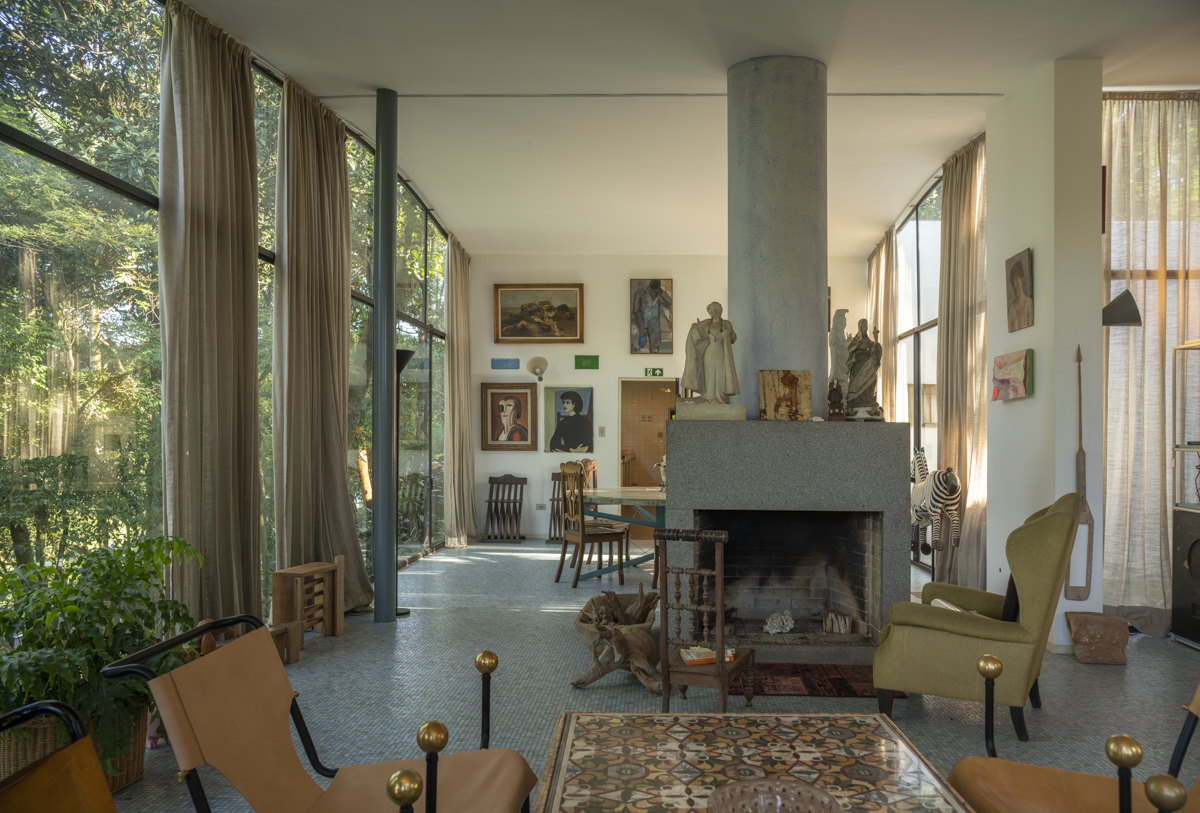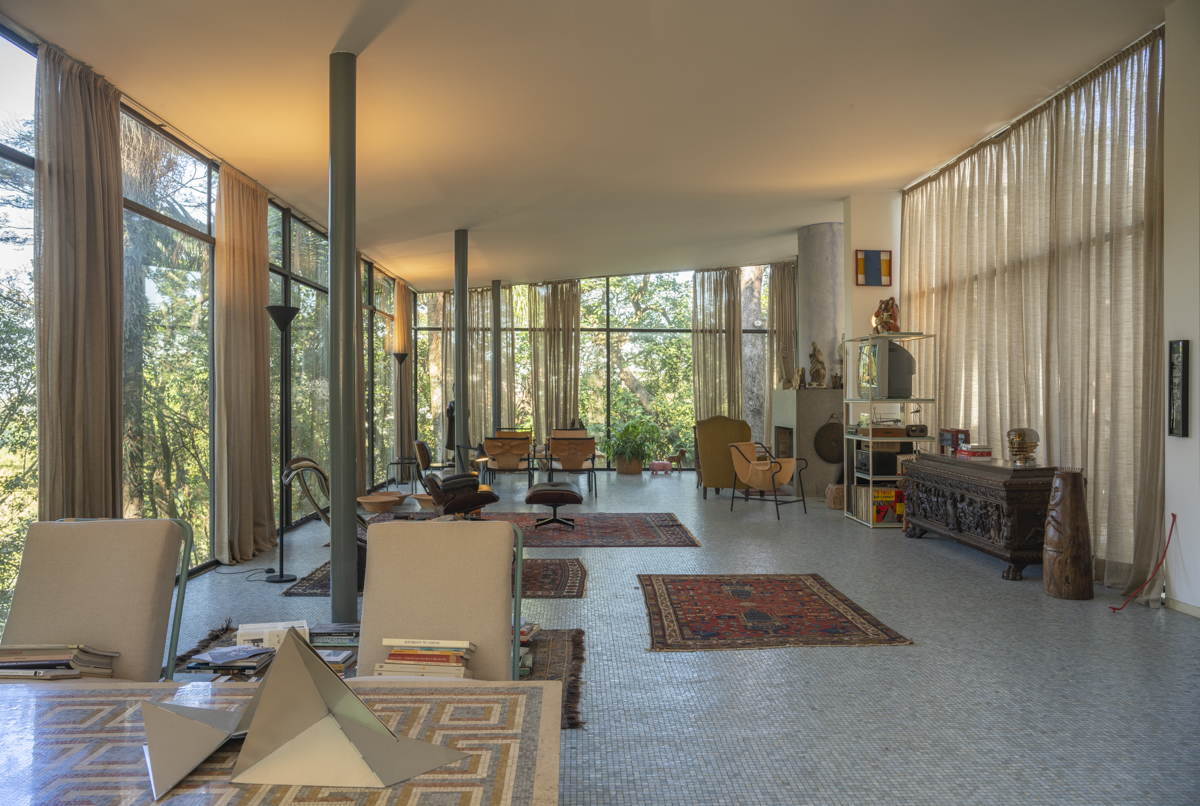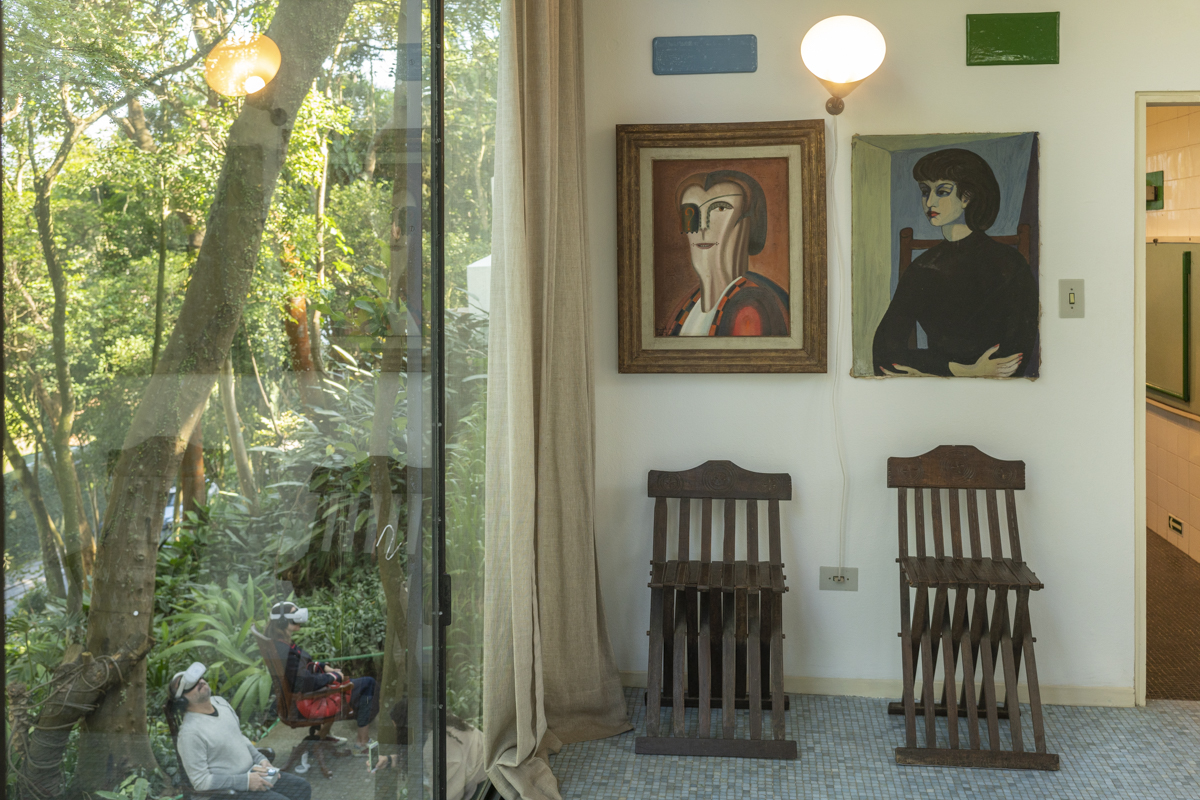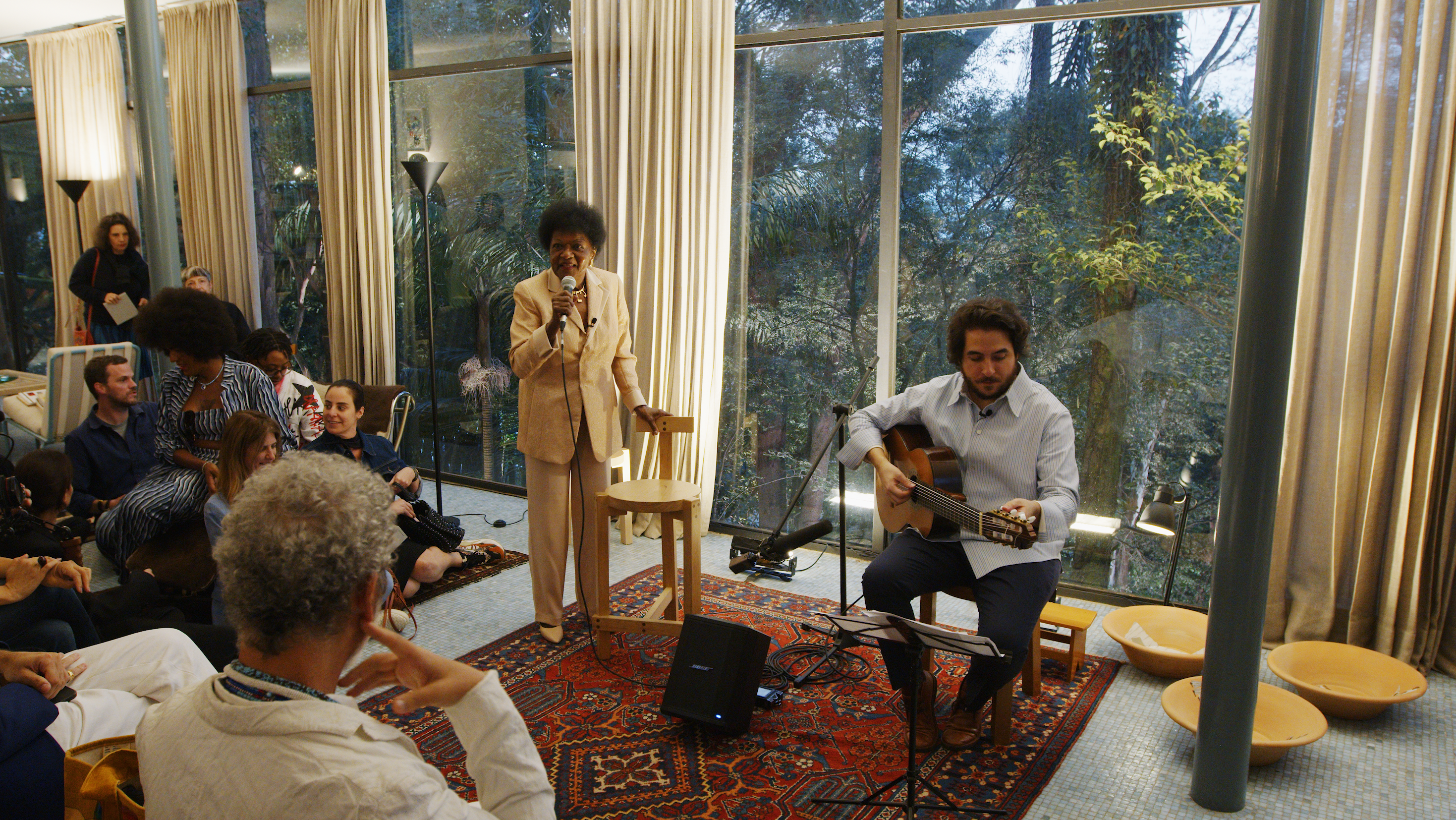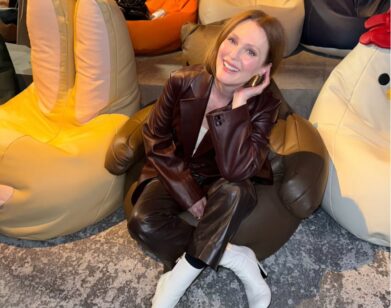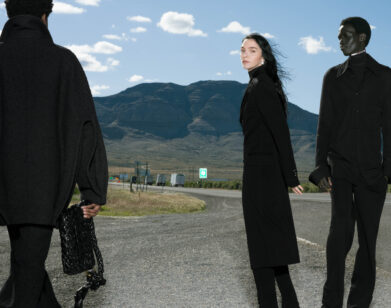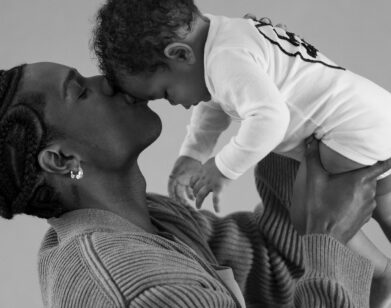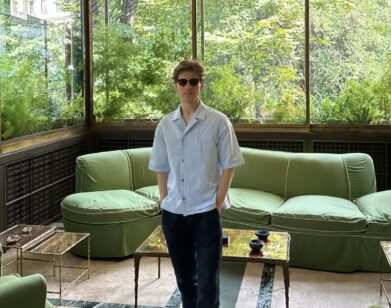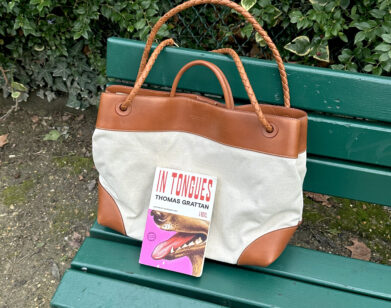GLASS HOUSES
Lina Bo Bardi and Bottega Veneta’s Matthieu Blazy Take Brazil
A glass house can mean many things. Perhaps that’s the reason such a diverse pool of architects and designers in the mid-20th century were attracted to it as the ultimate modernist form—from the restrained formalism of Philip Johnson or Mies van der Rohe to the louche Hollywood glamor of Pierre Koenig. Arguably, though, none of these iconic examples compares to the synthesis of social, political, environmental, and personal forces that comprise Casa de Vedro, by the Italian-born, Brazilian-based visual maestro Lina Bo Bardi. She constructed her glass house as her own private residence on the site of a former tea farm on the elevated outskirts of São Paulo. Completed in 1951, the geometric cantilevered house is indisputably a formal masterpiece. Yet everything about it—from the thick jungle of trees that has grown to surround it on all sides, purportedly cultivated by Bardi herself, who sprinkled a trove of seeds around the grounds, to the intimate furnishings that include local indigenous crafts, ancient Roman statues, and books on Marxism—signals that the house’s truer purpose was about forging real conversations and connections. In other words, Bardi’s ethos seemed to be about looking out as well as in.
Bardi was a polymathic pioneer—architect, artist, curator, set designer, costumer, furniture-maker… the list is endless. After moving with her curator husband from her native Italy to Brazil after World War II, she quickly forged a career that ran in so many aesthetic directions, and involved so many other artists in her productions, that today her legacy extends from Rio to Salvador (one of her most remarkable achievements is the construction of the São Paulo Museum of Art, or MASP, a floating glass rectangle that includes Bardi-designed glass easels for the exhibition of paintings). But her beloved glass house served as much more than a private residence. In the forty years that the couple lived there, the house became an active watering hole for artists and thinkers. Guests include Brazilian musician Gilberto Gil and visiting artists like Gio Ponti and Alexander Calder. Significantly, Bardi’s art and architectural productions corresponded to Brazil’s larger 1950s cultural boom—think of Bossa nova or Black Orpheus—which drew the attention of the entire world. Brazil was, for a moment, the next Florence in the Renaissance, albeit one with plenty of ocean spray and swimsuits.
Today, a new Brazilian cultural explosion might well be underway in these more optimistic, post-Bolsonaro times. That seems to be the intention of the Italian brand Bottega Veneta in its choice of São Paolo for the latest installment of The Square, a free-wheeling, on-the-ground project of global exchange. Helmed by the brand’s creative director Matthieu Blazy, the program launched last year in Dubai before traveling to Tokyo. This third iteration, however, seems especially dear to Blazy’s heart, as he feels an affinity for Bardi’s radical work-life ethic. The idea behind basing the project in Bardi’s glass house was an effort to revive the generous creative spirit of its architect, bringing art out into the world and the world into art, blending the past and present until Bardi’s larger mission still seemed very much alive. The project kicked off with a series of conversations from local artists, environmentalists, musicians, curators, gardeners, and poets, with contemporary visual works intermixing around the compound with Bardi’s own art collection and furnishings.
One of the most vital parts of the project, however, is the attempt to address the climate crisis head on. Art has become so adept at gesturing toward struggle and political action without actually addressing it directly. One of the successes of The Square was the daring way in which art rubbed up against the climate crisis. A set of wooden swivel chairs was arranged underneath the house’s overhang, each fitted with a VR set that transported the strapped-on, swiveling participant right to the trees and trails of the Brazilian Amazon. It allowed, even virtually, attendees to experience in full surround not only the miraculous beauty of the rainforest and its indigenous territories but also the horrific toll of deforestation in the stripping of trees blazing over charred ground. According to the VR artist, the filmmaker Estevão Ciavatta, who spent a week in the Amazon filming the footage, the project was “commissioned to me by an interfaith initiative of the UN. It was made to be presented in evangelical churches in the Amazon. Most of them are connected with Bolsonaro. The question that was raised through this work to these people: what are you doing with the work of God? Are you supporting people who preserve or destroy it?” The current destruction of the rainforest is reminiscent of the rubble and wreckage that Bardi must have witnessed in her native Italy after the war. And it makes Bardi’s act of throwing seeds to replant a rainforest around her home seem wildly prescient.
Fashion brands often pay lip-service to art and politics, winking at ideas without ever exploring them. But Blazy and his Bottega Veneta team have come up with an intrepidly generous, daring, and inspiring way to spotlight the art practices and their relationship to politics. Exhibit one: long after I left São Paulo, I was still talking about the VR piece and the conversations that I heard from the artists and thinkers that day. How often does that happen, even at the most well-intentioned art event?
The final performance of the day brought legendary Bossa nova singer Alaíde Costa to the microphone in the Bardi living room. Accompanied by guitar, Costa sang a few soulful songs. By the end, nearly everyone was crying.

